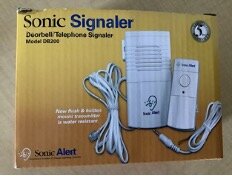Minimizing the impact of divorce
If two adult partners with children decide to break up, one of their greatest challenges will be to anticipate and solve for how the split affects their children. In the easiest of circumstances, it’s a complicated situation, and it’s magnified if one or more of the children have special medical, psychological or emotional needs and challenges.
Even more than mainstream children, most with special needs depend on an environment that’s stable and predictable. Many will be resistant to change and have a difficult time processing the issues each family member faces. And like their mainstream peers, children with special needs may contend with feelings that they caused the breakup or could have prevented it.
All of which is to say that children with special needs are affected by divorce in unique ways, and divorcing parents should keep those issues front-and-center as they move through the process. As you navigate the logistics and emotional minefields of breaking up, keep these considerations in mind to help minimize the impact on children with special needs:
Emotional considerations
If at all possible, find a way to tell them about the divorce together, in a unified and loving way.
Stay focused on how the divorce will affect them emotionally and logistically—not how it affects the parents.
Points to emphasize: that they are and will remain unconditionally loved, accepted and protected; that they're in no way responsible or at fault for the breakup. Repeat as often as needed.
Make every effort to exert self-control. Despite the difficult subject matter, remember that anger, recriminations and threats will be counterproductive and impair their ability to cope.
Before, during and after the actual divorce, give them wide latitude to process the information, as well as their feelings about it, in their own way.
Legal considerations
Be prepared to formalize the different kinds of custody each parent will have, as well as the extent to which each kind of custody is shared. In a divorce situation, custody is often defined in physical, medical, legal and educational terms.
When children with special needs are involved, one of the most significant divorce triggers can be that the parents are not able to share the work of parenting equally. If this is the case, consider a stipulation that gives the custodial parent exclusive authority over medical and educational decisions. This can work to the advantage of all parties involved.
Decide together how much access the non-custodial parent will have. These details, once they’re agreed to, will impact the children’s day-to-day life, as well as life for the parents and any siblings. Expect to negotiate these terms carefully.
Be sure to factor in the transition to adulthood, regardless of their current age and/or prospect of living independently. By planning for these issues at the outset, you’ll have a clearer roadmap as they mature.
Financial considerations
If the parents’ incomes differ significantly, both parents should account for the disparity when establishing levels of both alimony and child support.
Children with special needs may qualify for government benefits. Depending on the diagnosis, these benefits may end when they reach age 18, or the benefits could last throughout their lives. These benefits, if available, should be part of the couple’s financial calculus.
Some parents choose to create a Special Needs Trust and/or a life insurance policy (often payable to the trust) as a way to ensure continuity of income.
Consider including “incidental” childhood expenses—like clothes, school supplies, extracurricular activities and even summer camp—in any financial negotiations.
If applicable, consider including college expenses beyond tuition, (i.e., living expenses, books and any special accommodations that will be required if and when children with special needs pursue post-secondary education).
For help navigating the divorce process in ways that keep children’s needs out front, including family-based parenting classes, after-school programs and more, contact us at 904-346-5100.
































